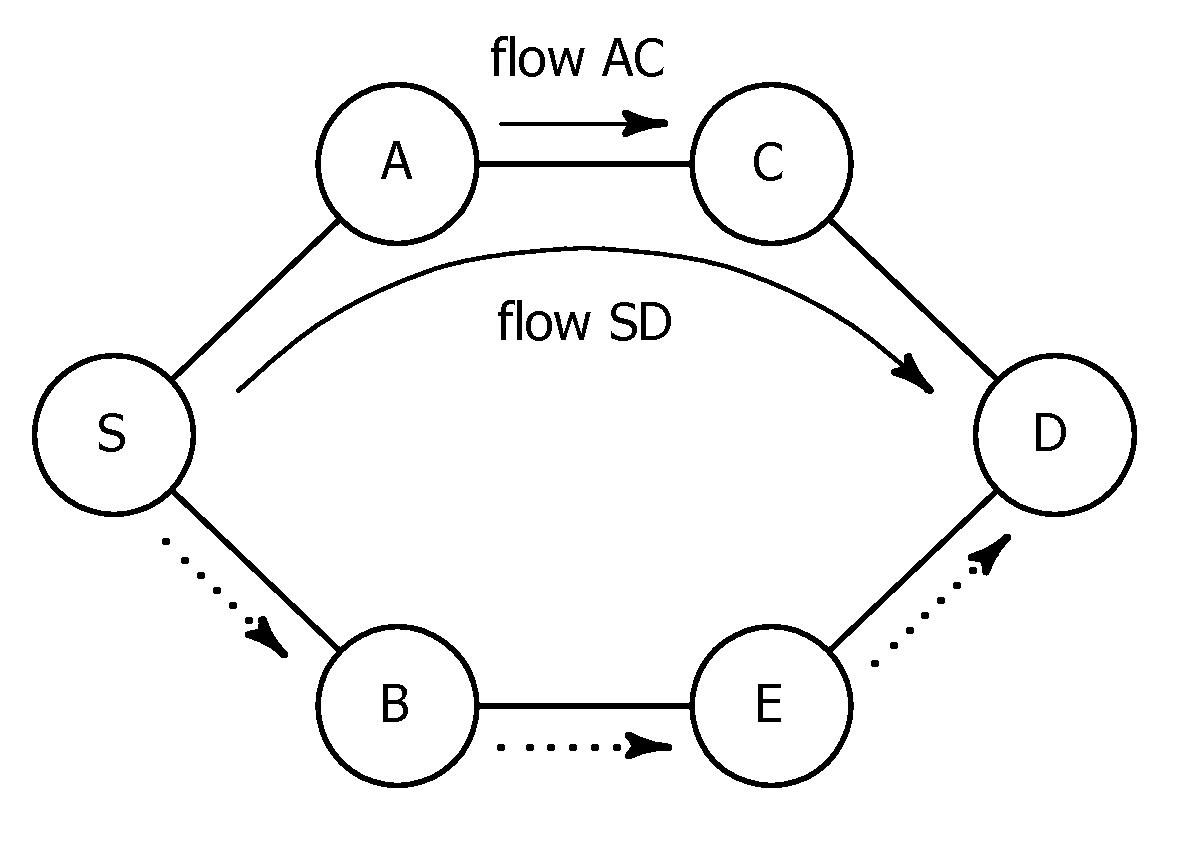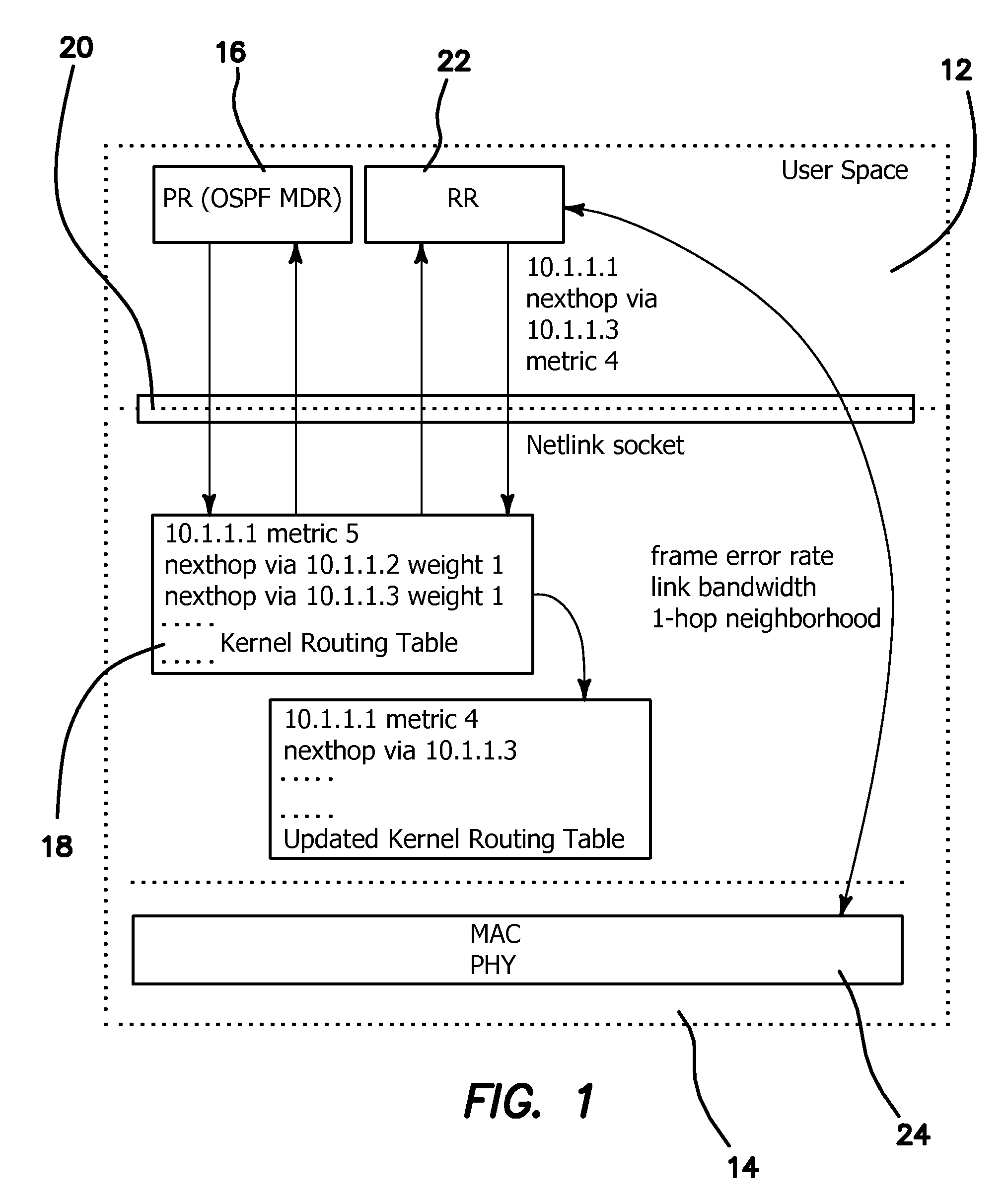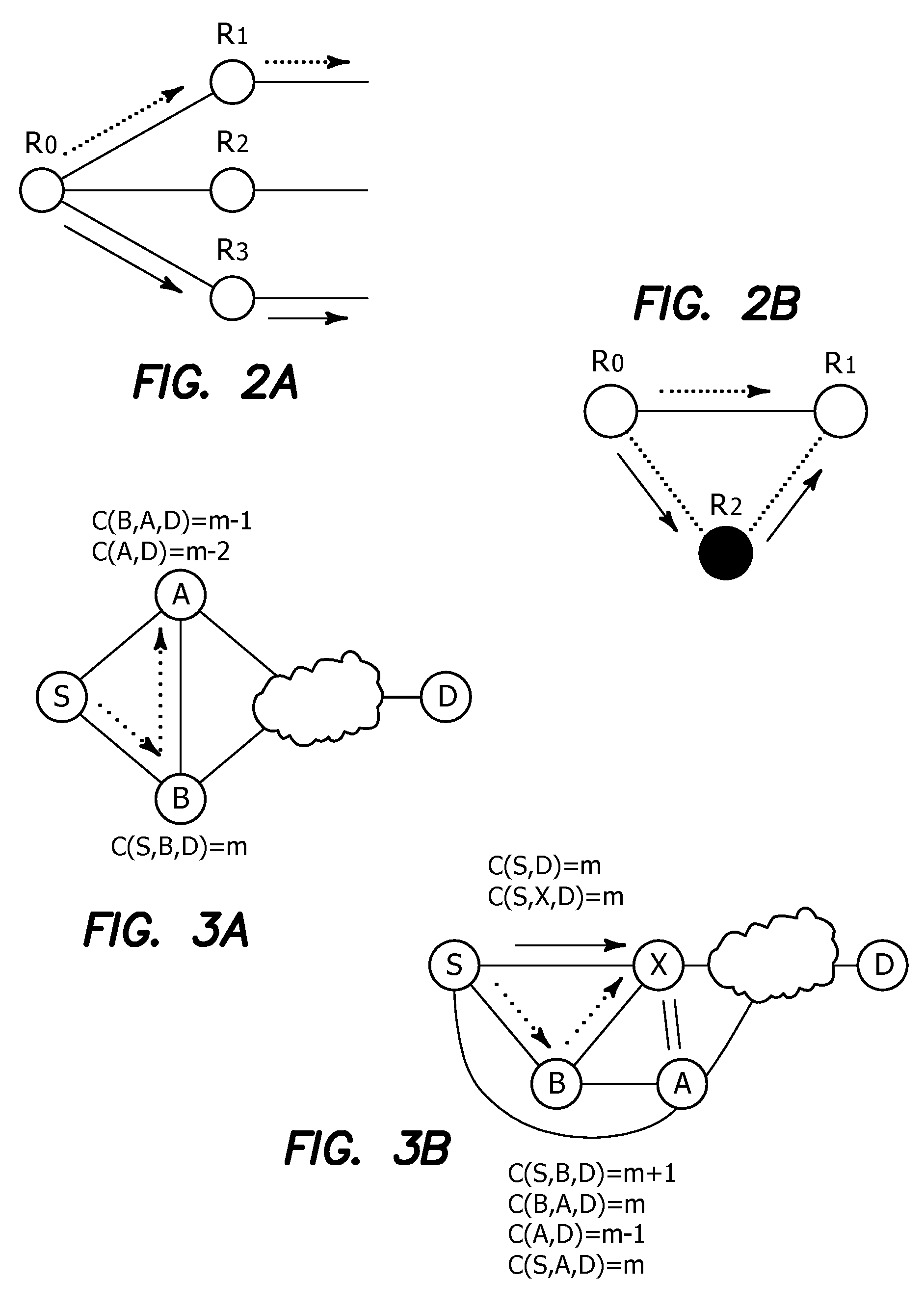Hybrid Cross-Layer Routing Protocol for MANETs
- Summary
- Abstract
- Description
- Claims
- Application Information
AI Technical Summary
Benefits of technology
Problems solved by technology
Method used
Image
Examples
Embodiment Construction
[0025]Essentially, a routing protocol identifies one or a number of minimum routing cost paths from a source to a destination. The routing cost is measured based on a priori or on-demand known factors such as the hop count, delay, or other quantities of interest. Given an intermediate node of a MANET where more than one link are associated with the minimum cost path, it is highly likely that some of those links are affected by transient low qualities or even intermittent loss of connectivity. Forwarding packets on such links results in experiencing random bit errors and packet erasures. While it is preferred to choose a high quality link at the time of forwarding, a routing layer protocol operating at the network layer is not able to identify such links due to the lack of availability of information at the network layer. Link layer information can be utilized in making intelligent routing decisions at the network layer, only if it can be relayed from the MAC protocol to the routing ...
PUM
 Login to View More
Login to View More Abstract
Description
Claims
Application Information
 Login to View More
Login to View More - R&D
- Intellectual Property
- Life Sciences
- Materials
- Tech Scout
- Unparalleled Data Quality
- Higher Quality Content
- 60% Fewer Hallucinations
Browse by: Latest US Patents, China's latest patents, Technical Efficacy Thesaurus, Application Domain, Technology Topic, Popular Technical Reports.
© 2025 PatSnap. All rights reserved.Legal|Privacy policy|Modern Slavery Act Transparency Statement|Sitemap|About US| Contact US: help@patsnap.com



